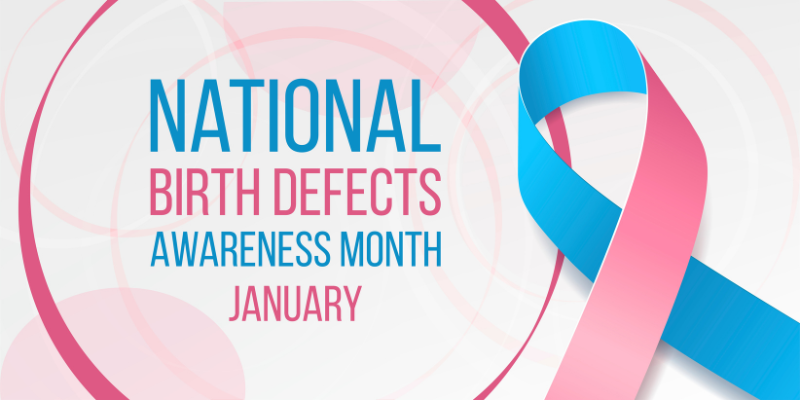
January is National Birth Defects Prevention Month. This month is all about raising awareness, providing educational resources and support for individuals living with these conditions. The focus this year is “Healthy Communities, Healthy Babies”. Continue reading to find out more about this topic and what you can do to recognize National Birth Defects Prevention Month!
What to Know:
Birth defects are structural changes that can affect any part of the body. Birth defects can influence the way that the body looks and functions. The CDC reports that 1 in 33 babies is affected by birth defects, which is about 3% of all babies born in the United States. Birth defects can be identified before, at, or after birth. There are tests and ultrasounds available to identify certain birth defects during pregnancy, but many conditions are identified either at birth or within the first year of life.
It is important to remember that not all birth defects can be prevented, but there are things that can be done to prevent certain types of birth defects and increase the chances of a healthy baby being born. Here are a few examples of preventative steps that can decrease the chances of birth defects:
- Taking folic acid every day.
- Attending regular medical checkups with a healthcare professional.
- Reduce the risk of infections by staying up to date with vaccinations before pregnancy.
- Avoid harmful substances like alcohol, tobacco, and other drugs during pregnancy.
What You Can Do:
1. Raise Awareness Through Social Media
Sharing posts on social media can help raise awareness and help spread educational resources to help prevent birth defects and provide support. Many hashtags that are associated with National Birth Defects Awareness month include; #acrossthelifespan, #birthdefects, and #healthycommuniteshealthybabies. To find additional information about how you can raise awareness through social media, visit this resource from the CDC!
2. Learn More and Share Resources
The National Birth Defects Prevention Network
- The National Birth Defects Prevention Network (NBDPN) provides educational resources as well as opportunities to get involved in birth defects surveillance, research, and prevention!
Centers for Disease Control and Prevention (CDC)
- The CDC provides many educational resources about prevention before and during pregnancy along with educational materials about birth defects throughout the lifespan including infancy, childhood, adulthood, and adolescence.
Take some time in January to educate yourself and others about birth defects and prevention. We hope that you join us in raising awareness for National Birth Defects Prevention Month, show your support, and do what you can to help not only in January but throughout the entire year.
January 14, 2023 by Life Tech
January is National Birth Defects Prevention Month. This month is all about raising awareness, providing educational resources and support for individuals living with these conditions. The focus this year is “Healthy Communities, Healthy Babies”....